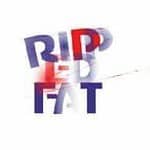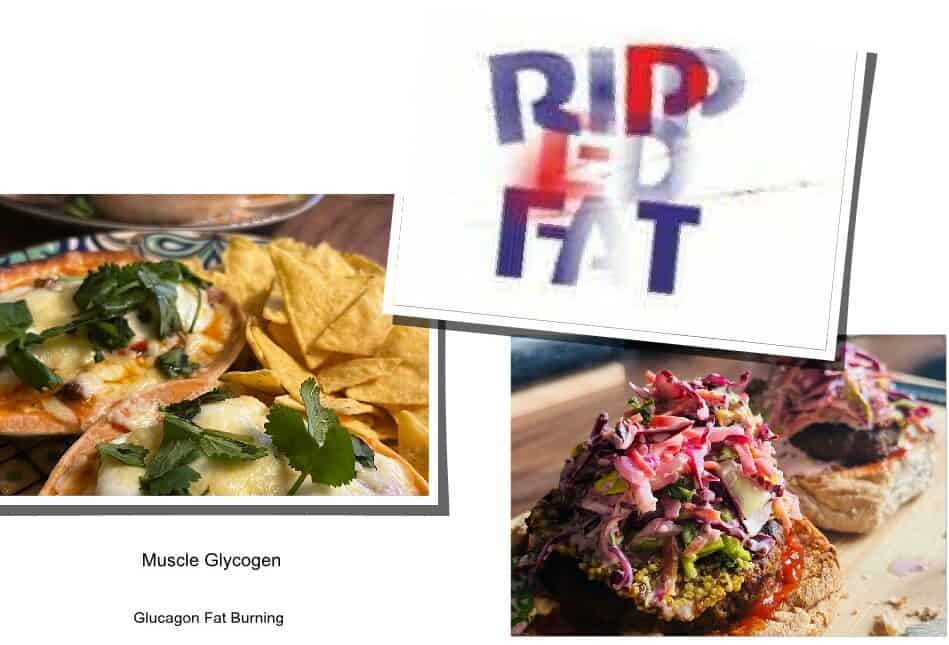RippedFat

glycogen Muscle Ripped Fat Abs And Tight Buns
High Fiber Low Sugar Carb Foods
You Are What You Eat
Incorporating high fiber low sugar low carb foods in to your diet is beneficial. Not only do they offer better nutritional value, but they also contribute to maintaining a healthy body weight. Consuming these types of nutrition can enhance your body’s metabolism, leading to a faster metabolic rate and more efficient energy burn-off. Conversely, a slow metabolism can lead to weight gain, whereas a diet rich in high-fiber, low-sugar, and low-carb foods can promote a more rapid metabolism, aiding in effective weight loss and fat reduction.
Understanding how fats function in the body is key not only for weight loss but also for effective fat reduction that targets muscle growth and define a rippedfat physique. The process begins with the food you consume; all foods are broken down into glucose, and an excess of it triggers the production of insulin.
Insulin, a hormone secreted by the pancreas, regulates blood sugar levels and determines whether sugar is stored as energy or used as glycogen. Muscle cells and fat cells are two types of cells that respond to insulin: muscle cells utilize glucose for energy, while fat cells store excess glucose as fat for later use as formed glycogen.
This storage occurs after the consumption of carbohydrate-rich foods, which halts the breakdown of glucose when levels are too high. If not used for immediate energy, elevated glucose levels lead to excess fat storage, as fat cells prioritize storing fat over glucose, which takes precedence over energy in muscle cells.
Insulin Without Glucagon
Maximize Weight Loss And Gain Muscle Definition
Insulin and glucagon are both hormones produced by the pancreas which regulates a persons blood sugar levels. Insulin and glucagon operate in a negative loop to each other this means glucagon does the opposite to insulin. Insulin is a function to lower glucose levels from the bloodstream, when glucose enters the bloodstream it raises blood sugar levels in response the pancreas releases insulin, insulin then signals to escort glucose out of the bloodstream into cells for blood sugar levels to drop.
Each time you eat a food carbohydrate it is converted to glucose (simple carbohydrate) means the food breaks down into glucose very fast, as opposed to a (complex carbohydrate) low carb, fiber food which has a very slow glucose breakdown, less time to store glycogen in the fat cells as unused energy.
Insulin is a crucial factor in determining whether glucose is utilized immediately for energy or, if glycogen stores are saturated, glucose as fat will be stored in the liver and muscle cells appearing as overall body fat.
Glucagon Fat Burning Hormone
Glucagon, also produced by the pancreas, signals the liver and muscle cells to convert back the stored glycogen back into glucose, back into the bloodstream when blood sugar levels drop.
When the liver and muscles releases glucose back into the bloodstream, glucagon’s role is to counteract the actions of insulin and keep blood sugar levels from dipping too low, contrary to insulin, which lowers them when they are high.
Glucagon acts as a fat-burning hormone once the insulin hormone has been depleted, which goes after the stored glycogen from the liver and fat cells, glucose is used for immediate energy, distinct from weight loss. During fasting or consuming strictly protein-based meals, glucagon is triggered, leading to deep ketosis pro-ripped fat burning by reducing the insulin-to-glucagon ratio, thus maximizing fat loss and ripped body fat physique.
Muscle Up Pad Out
During workouts and long strenuous exercise or periods of energy expenditure throughout the day, if one hasn’t eaten for 3 to 4 hours, glucagon mobilizes stored glycogen from the liver and muscle cells to provide glucose for energy. Muscle glycogen serves as the preferred energy source for skeletal muscle, muscle cells are used for energy, low glycogen levels can lead to reduced performance, quicker fatigue and slower recovery.
Understanding this process can help in winning the battle against weight gain while also enhancing muscle growth and ripped muscle fat definition.
Low Sugar Carb Foods
Influences Slow Metabolism
Know Your Carbs
 The glycaemic index simply tells us after eating a carbohydrate food how fast they are absorbed and broken down into the bloodstream and how they effect blood sugar levels.
The glycaemic index simply tells us after eating a carbohydrate food how fast they are absorbed and broken down into the bloodstream and how they effect blood sugar levels.
The GI scale runs from 0 to 100:-
- A low GI 55 or below are (slow release)slowly absorbed foods (complex carbohydrate) these include fruits because of their fiber content, vegetables, unsweetened milk, nuts and pulses, whole grain cereals, low fat dairy foods and wholemeal bread, potatoes with skins, barley wheat, couscous, quinoa whole wheat pasta, basmati long grain rice.
- A medium GI is ranked 55 to 69 this category they have a moderate impact on blood sugar levels leading to a slower rate in raised blood sugar levels examples include white and sweet potatoes, corn, white rice and potatoes, granary bread, naan bread, wholemeal pitta bread, some breakfast cereals made with wheat and cream.
- A high GI is ranked at 70 (fast release) or more these foods cause rapid spikes in blood sugar examples are cornflakes, processed oatmeal bars, boiled potatoes, white bread, white rice, easy cook rice, brown rice, white pasta, white noodles, oven chips mostly all processed food, raisins, sultanas and apricots watermelon and pineapple because they are without fiber.
The glycaemic index (GI) table only lists foods that contain carbohydrates. It excludes items such as fish, meats, cheese, and eggs because they primarily consist of proteins or animal proteins. Originally developed to aid diabetics in controlling their blood sugar levels by pinpointing low GI carbohydrate foods, the GI is also applicable for weight management and blood sugar regulation.
By choosing high fiber low sugar carb foods, whole grains, low in saturated fat, salt and sugar are as part of a healthy diet and losing weight.
Choosing top animal protein fat and fiber foods, low sugar carbs in your diet are also the better choices you should be aiming for not only are they healthier for nutritional value they also help maintain healthy body weight.
 This means by consuming these nutrition sources your body’s metabolism will charge up a faster metabolism to burn off more energy that improves metabolic rate. Having a slow metabolism is easier to add on weight choosing better carbohydrates of complex (slow release) carbs over (fast release) carbs about high fiber low sugar carb foods to burn off energy more efficiently and gain optimal ripped fat weight loss.
This means by consuming these nutrition sources your body’s metabolism will charge up a faster metabolism to burn off more energy that improves metabolic rate. Having a slow metabolism is easier to add on weight choosing better carbohydrates of complex (slow release) carbs over (fast release) carbs about high fiber low sugar carb foods to burn off energy more efficiently and gain optimal ripped fat weight loss.
Insulin Without Glucagon
Maximize Weight Loss And Gain Muscle Definition
Maintaining or reducing weight requires a healthier lifestyle, and choosing the right foods is crucial for efficient metabolism. To enhance metabolism, include high fiber low sugar low carb foods, protein and fat in your diet, these are best fat burning foods for breakfast, without a heavy sugar load. Combining these with sources of protein, fat, and fiber can slow the breakdown of sugars in the body.
Substituting carbohydrates for top animal fat and fiber foods stabilizes blood sugar levels. Complex carbohydrates that are high in fiber and low in sugar provide a healthy, sustainable energy source, unlike simple carbs. For athletes or regular gym-goers, a diet rich in complex carbs, fats, and proteins not only offers a healthier alternative but also improve stamina and energy during and post-exercise by utilizing glycogen efficiently.
Traditionally, it was believed that sugars were the primary source of energy, with fats being secondary. However, we now understand that a diet rich in quality animal protein fat and fiber foods can provide a healthier and more sustainable energy source.
This also helps to maintain satiety for longer periods. Carbohydrates have been central to many controlled weight loss diets and calorie counting; they are also linked to the cyclical weight gain and loss known as ‘yo-yo dieting’ and an overall unhealthy lifestyle.
Unless one is actively building muscle or is very active throughout the day, perhaps spending significant time at the gym or engaging in athletics, it is advisable to limit the intake of refined, processed carbohydrate foods.
The rapid breakdown of simple carbohydrates into glucose and its swift entry into the bloodstream can decelerate metabolism and spike insulin levels—the hormone associated with fat storage—because the body cannot metabolize these simple carbs quickly enough unless one is engaged in extensive workouts or exercises to burn off this immediate energy.
Dietary Fructose Is A
Naturally Occurring
Simple Sugar Found In
Fruit And Vegetables
Honey And Root
Vegetables
Fructose is found in fruits and drinks commonly added to foods and drink products, it is a natural simple sugar (fruit sugar), fruits and root vegetables, it is known for it’s sweetness also, has a low glycemic index, which means it does not lead to a rapid increase in blood sugar levels, when eaten in their whole-food plant form.
Unfortunately when added to processed foods and drink it becomes a HFCS it becomes a simple sugar additive hidden sugar. The liver converts the fructose into glucose, then dissolves into glucose (blood sugar).
Synthetic Sweetener
HFCS
High Fructose Corn Syrup (HFCS) is a synthetic sweetener derived from processed corn starch, which undergoes a chemical alteration to convert some of its glucose into fructose, resulting in a refined carbohydrate that does not occur naturally. HFCS is widely used in processed foods, condiments, and beverages due to its lower cost and longer shelf life compared to sugar.
This can lead to increased insulin production and subsequent fat storage. HFCS is often favoured over granulated sugar in manufacturing due to its ease of handling and cost-effectiveness. However, the overconsumption of any sugars, including HFCS, poses significant health risks, contributing to obesity, diabetes, and heart disease.
The consumption of added sugars, especially as sweeteners in soft drinks, is closely associated with weight gain. Unlike other sugars, fructose does not trigger the release of insulin, the crucial hormone that regulates energy intake and expenditure.
Consequently, high levels of dietary fructose act similarly to fats in the body, being neutral to insulin.
Fructose is often considered as empty calories, interchangeable with calories from starch. Glucose, which is composed of equal parts fructose and glucose, owes its sweetness to fructose, making it a successful additive in processed foods. Although not the preferred energy source, fructose is a carbohydrate that acts like a fat.
Its uptake when metabolized by the liver promote fat synthesis, which our bodies are not adapted to handle in the large amounts present in modern diets. Fructose can trigger chemical reactions that lead to metabolic diseases, accelerating cellular aging and driving degenerative processes such as aging, cancer, and cognitive decline.
The question is not whether HFCS is worse or better than sugar the question is whether sugar
in any of it’s forms is toxic In excessive amounts
Health-conscious individuals might choose juice over soda, avoiding Sunny Delight in favour of natural 100% fruit juices. These products are marketed for their health benefits and lack of added sweeteners, implying they are beneficial. However, while fruit is good for you due to its fiber content, on a calorie-for-calorie basis, 100% orange juice can be worse than soda. This is because orange juice contains 1.8 grams of fructose per ounce, compared to soda’s 1.7 grams of fructose per ounce.
All caloric sweeteners, including fructose, white sugar, cane sugar, beet sugar, brown sugar, and their less expensive counterpart, HFCS, are similar. This category also encompasses maple syrup, honey, and agave. Refining and processing may diminish or eliminate any potential health benefits. Ultimately, the consumption of sugars is problematic.
Top Animal Protein Fat
And Fibrous Foods
Healthy sources of top animal protein fat and fiber foods do not trigger insulin spikes as carbohydrates do. Fiber, which is not digested or absorbed by the body, acts as a fat-burning agent and passes through the stomach. Dietary fiber is present in fruits, vegetables, whole grains, and legumes; it is the part of the plant that the human gut cannot digest. Consequently, it is not used for energy and is ultimately excreted.
There are two types of fiber: soluble, which dissolves in water, and insoluble, which does not. Soluble fiber slows digestion and absorption, and is fermented by bacteria, sometimes leading to socially unacceptable emissions.
Metabolically, insoluble fiber creates a lattice structure for soluble fiber to rest upon, while soluble fiber fills the gaps within this lattice. Insoluble fiber is made up of non-glucose carbohydrates, such as cellulose, which is similar to the stringy parts of celery. These fibers are not digested because they do not dissolve in water. They act as a laxative and accelerate the movement of food and waste through the gut.
Dietary Fiber Complex Carbs
| Soluble Fiber Absorbs Water | Insoluble Fiber Does Not Absorb Water |
| Oat Meal Oat Cereal | Whole Wheat Whole Grains Wheat Bran |
| Apples Oranges Pears | Corn Bran Seeds Nuts Barley |
| Oat Bran Nuts Flaxseeds | Cous Cous Brown Rice Bulgar Wheat |
| Beans Dried Peas Carrots | Zucchini Cabbage Onions |
| Blue Berries Psyllium Cucumber | Tomatoes Celery Carrots Dark Leafy Vegetables |
| When Fructose Is Added To Processed Foods During Processing The Fiber Is Lost |
 Fiber is a food source that aids in reducing belly fat, consisting of natural bran, gum, and cellulose found in fruits, vegetables, and grains. Although it is a carbohydrate, it passes directly through the digestive system without raising insulin levels. It slows down the digestion of sugars in food and facilitates the movement of food through the gut, helping to speed up the metabolism, burn fat, and promote weight loss.
Fiber is a food source that aids in reducing belly fat, consisting of natural bran, gum, and cellulose found in fruits, vegetables, and grains. Although it is a carbohydrate, it passes directly through the digestive system without raising insulin levels. It slows down the digestion of sugars in food and facilitates the movement of food through the gut, helping to speed up the metabolism, burn fat, and promote weight loss.
Best high fiber low carb foods are powerful as they have minimal impact on insulin levels and don’t count towards our daily carbohydrate total. We can deduct the fiber content from the total carbs. For instance, if a food label indicates 12g of carbohydrates and 7g of fiber, we calculate 12g – 7g = 5g to determine the net carbs, which in this case is 5g.
Consuming fiber with a meal, both soluble and insoluble, creates a gel-like barrier in the intestines, slowing the absorption of glucose, fructose, and fat. This deceleration of glucose absorption curbs the glucose peak and reduces the rise in blood sugar levels. Consequently, the pancreas releases less insulin, leading to less energy being stored as fat.
Choosing Top Animal Protein
Fat And Fiber Foods
Top animal protein-fat and fiber foods – The best high-fiber, low-carb foods are the ideal choices to include in your meals, as selecting the right carbohydrates and fat-blocking foods is crucial for your body’s shift to a healthier alternative energy source. When attempting to lose weight, consider not only the calories but also the hormones that affect metabolism, such as the glycogen and glucagon hormones.
Glycogen is formed in fat cells from stored sugar (glucose) and is converted into fat when the body does not require immediate energy.
Conversely, the glucagon hormone assists in fat burning when blood sugar levels are low. It activates the conversion of stored glycogen back into glucose when energy stores are depleted, either through strength training or daily exercise.
Glucagon plays a role in fat burning during energy-intensive workouts by utilizing the glycogen energy source. Depending on whether your goal is weight loss or muscle strength, this process can initiate an accelerated metabolic rate.
Choosing The Right Carbs
Or The Wrong Carbs
Choosing refined and processed foods means consuming the wrong types of carbohydrates, which lead to excessive insulin production. This causes the body to store more energy and allows excess glucose to circulate in the bloodstream. When blood glucose levels are high, insulin helps transport the surplus sugar from the bloodstream into the liver and fat cells, where it’s stored as glycogen.
Consuming fast-release carbohydrates from processed foods spikes insulin levels, and if the energy isn’t used immediately, it can lead to weight gain. This inappropriate insulin response can result in increased fat around the belly, waist, hips, and thighs, often giving men an apple-shaped appearance.
Refined Processed Foods = Wrong Carbs
Refined Processed Food
Have Undergone
A Manufacturing Process
The primary concern is with refined and processed food products that have been manufactured, as these are the least healthy carbohydrates. They may also contain harmful chemicals that cause spikes in blood sugar levels (glucose). Since glucose metabolism depends on insulin, reducing the consumption of sugars and carbohydrates can stabilize blood glucose levels and enhance a sluggish metabolism.
Refined processed foods typically combine sugars, fats, and carbohydrates; therefore, cutting down on sugar intake can reduce insulin dependency, leading to a healthier, more stimulated metabolism. This shift allows for a more sustainable energy source derived from top animal protein fat and fiber foods.
By mastering the reduction of your body’s insulin dependency through the consumption of high fiber low sugar low carb foods, protein and fat sources, your body will begin to favour the metabolism of glucagon over insulin. Foods are metabolized into sugars (glucose) in the bloodstream at a rate that determines whether they will become fat deposits around your midsection; however, consuming fat does not directly lead to weight gain.
It is the hidden sugars in carbohydrates that cause insulin spikes, and insulin is the hormone that truly contributes to fat accumulation. Insulin is also a common factor in many health issues, extending beyond the mere loss of weight or the reduction of fat and sugars from the body.
For healthy weight loss and a boosted metabolism, consuming high-fiber, low-carb foods can help burn stored fat. It’s recommended to limit carbohydrate foods to about 10% of your daily intake, particularly refined starches and sugars. Processed white foods, such as white bread, pasta, rice, and potatoes, along with frequent snacking on high-sugar carbohydrates, can prevent your body from depleting the insulin hormone, slowing down the metabolic process.
White foodstuffs typically indicate that the fiber has been removed, and in the case of white potatoes, it was absent from the beginning. This occurs when foods undergo processing and manufacturing, transforming them into refined products found in cakes, biscuits, and fizzy drinks, which are high in carbohydrates and added sugars like sucrose, fructose, and glucose.
Will Your Middle
End Up A
Wodge Of Fat
Stop The Daily Sugar Drip Feed
Insulin is a hormone produced by the pancreas that primarily lowers blood sugar levels; it acts as an insulin-dependent glucose transporter. For instance, when blood sugar levels rise due to carbohydrate intake, the pancreas releases insulin, which then binds to insulin receptors on cell surfaces, whether muscle or fat, allowing glucose to enter the cells.
Elevated insulin levels facilitate the entry of glucose into muscle cells and also into fat cells, which can increase the rate of fat storage. There is a misconception that one should avoid insulin altogether due to its association with weight gain. However, it’s important to understand that increased insulin levels can inhibit lipolysis and fat oxidation, as well as fat burning.
This does not equate to completely stopping the consumption of high or low carbohydrates; rather, it’s about managing daily macronutrient intake to facilitate fat burning. Lipolysis, beta-oxidation, fat storage, fat loss, and fat gain all occur simultaneously.
It is the relative rate of each process that will determine your overall body composition. Terms such as ‘fast metabolism’ or ‘slow metabolism’ are relative; what constitutes low carbs for one person may be high for another. To lose fat, one typically needs to reduce caloric intake, particularly from carbohydrates and fats, to create a substantial deficit.
Blood Sugar Transporter
Best Of High Fiber Low Sugar
Low Carb Foods Lifestyle
High-quality sources of animal protein, fats, and high fiber low sugar carb foods do not induce insulin spikes as high-carbohydrate foods do. Fiber, which aids in fat burning, is not digested or absorbed by the body; instead, it passes through the stomach and exits the body.
Dietary fiber, present in fruits, vegetables, whole grains, and legumes, is a component of plants that the human digestive system cannot break down. Consequently, it cannot be utilized for energy and has only one final destination: excretion.
